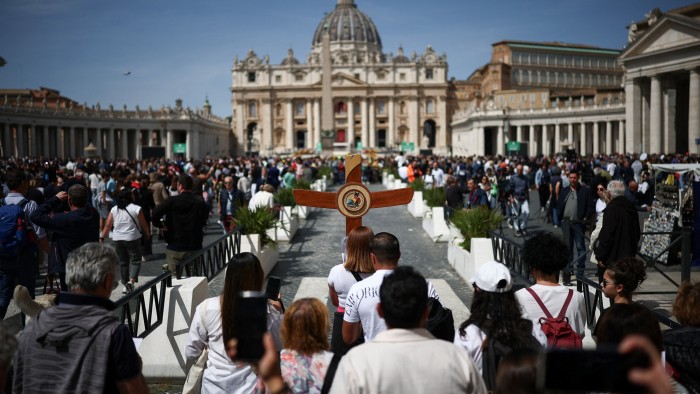The death of Pope Francis has been met with an outpouring of grief from Catholics bereft at the passing of their spiritual leader who brought humility and inclusivity to the church.
But once the mourning ends, attention will turn to the papal conclave: the secretive Vatican gathering where cardinals will choose Francis’s successor.
While the papacy is often described as a monarchy without a dynasty, the cardinals — so-called princes of the church — will select who will rule over them and give spiritual guidance to the world’s 1.4bn Catholics.
How does the conclave work?
Cardinals are sequestered in the Vatican for multiple rounds of secret ballots, prohibited from any verbal or written contact with the outside world until a decision is made.
Votes are held in the Sistine Chapel, which, according to the Archdiocese of Toronto, is swept for bugs beforehand, then locked and sealed while cardinals are inside.
During each round, electors write the name of their preferred candidate on a slip of paper, and deposit them into a silver urn, proclaiming “before God” that they have voted their conscience. Afterwards, results are read out, revealing potential contenders and the strength of their support.
Voting continues until one man secures the backing of two-thirds of the electors. Ballot papers are burned after each round, with black smoke emitting from the chimney if no decision has been made, while white smoke indicates the selection of the next pope.
Conclaves are infused with prayers for divine wisdom to guide electors’ choices, and vows of perpetual secrecy about the proceedings — though Francis did, unusually, shed light years later about what went on during the conclaves of 2005 and 2013.
Who participates?
All 252 Catholic cardinals can attend preliminary consultations on assessing Francis’s legacy and the church’s contemporary challenges — discussions that can heavily influence the vote. But only cardinals younger than 80 years old can vote for, or be selected as, the new pontiff.
Although Francis’s predecessor Pope Benedict declared the number of electors should be capped at 120, Francis’s hectic pace of appointments, including 20 new voting-age cardinals just named in December, means the church has 135 eligible electors.
In all, Francis has appointed 80 per cent of this group, whose composition reflects the changing make-up of a global Catholic Church declining in its historic European heartland while thriving elsewhere.
Just 53 are Europeans, while 23 are from Asia, 18 from Africa, 21 from central and South America, 16 from North America, and 4 from Oceania, according to the Holy See.
How long will the conclave last?
In the Middle Ages, papal conclaves lasted weeks or even months as rival factions battled to install their favourites in the vacant seat. Of late, decision making has accelerated, with recent popes chosen in a few days.
It took eight rounds to elect Pope John Paul II in 1978, while Pope Benedict was elected after four rounds in 2005 and Francis after five in 2013.
But Massimo Faggioli, a professor of theology at Villanova University, said this conclave would be more complex, given the number of electors and their geographic diversity, which could make reaching consensus harder. “It will be very messy — there is a high number of them and they don’t know each other well,” he said.

The conclave will begin two to three weeks after Francis’s death, giving cardinals from around the world time to travel to Rome.
If there is no decision after three days, electors pause for a day of rest, prayer and informal consultations, before voting resumes. After every seven unsuccessful rounds, electors pause again. If a pope is still not chosen after 33 rounds, the field is cut to the top two cardinals, with a two-thirds majority required to secure the papacy.
Are there any favourites for the job?
The race to succeed Francis comes after his papacy, especially his drive to make the church more inclusive, has aggrieved traditionalists.
Though there are no official nominees, the late pope’s illness in recent months shed light on several potential successors. They range from continuity candidates such as his right-hand man, Vatican secretary of state Pietro Parolin to reformist Luis Tagle from the Philippines to arch-conservatives such as Guinea’s Robert Sarah.
Conclaves are notoriously unpredictable and early front-runners can be overtaken by dark horses that gain support as voting progresses.
“The secret of winning the vote is not having most of the votes in the first ballot — but to be able to accrue mileage as it goes along,” Faggioli said.
As a popular Italian proverb holds, “he who enters the conclave a pope comes out a cardinal”.
This story has been updated to reduce the number of eligible electors to 135 following an update from the Vatican
Read the full article here




